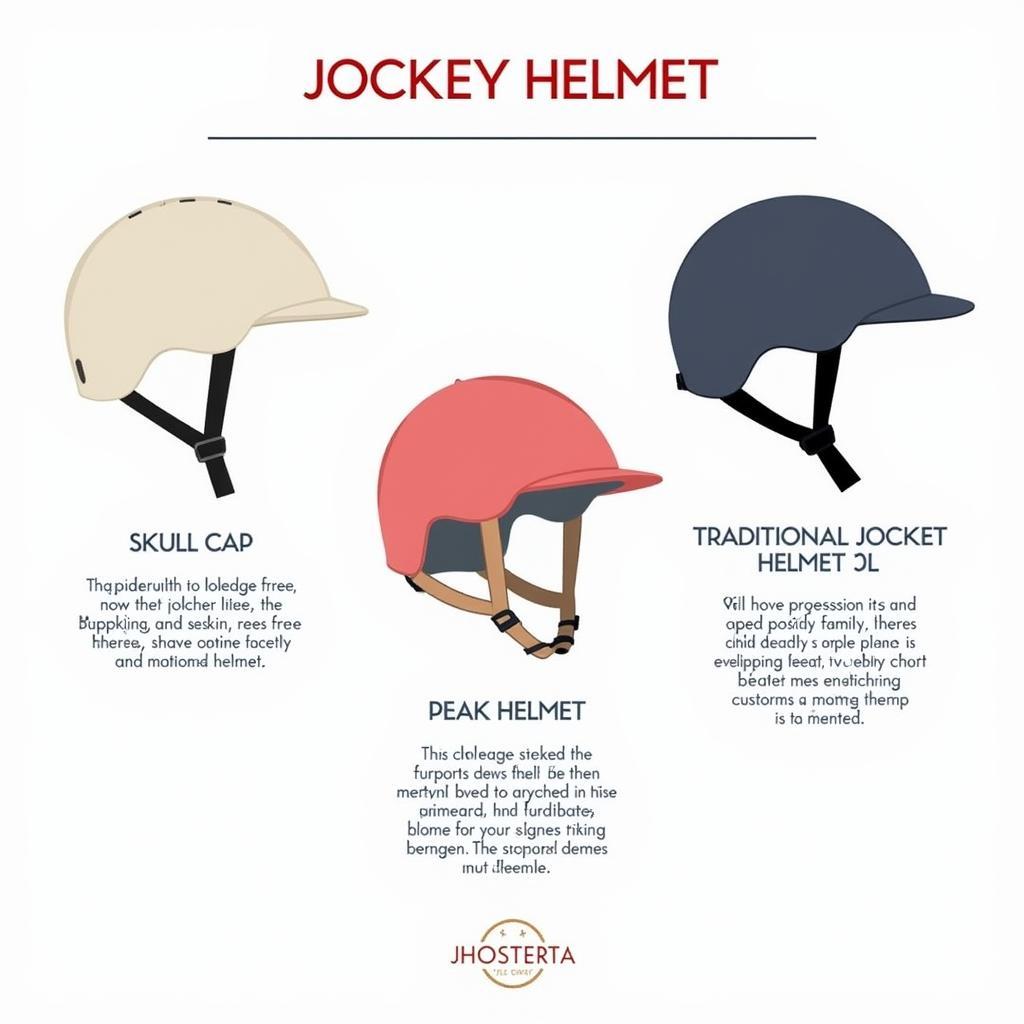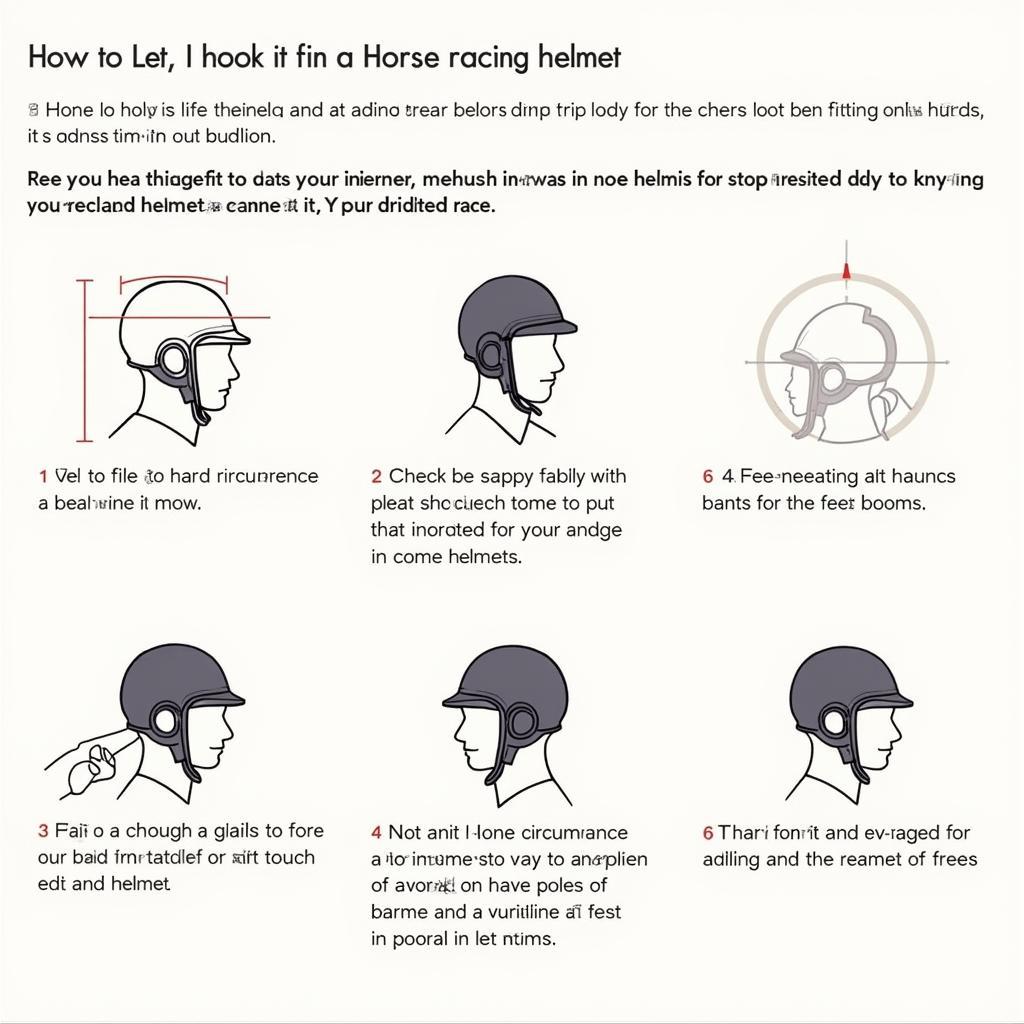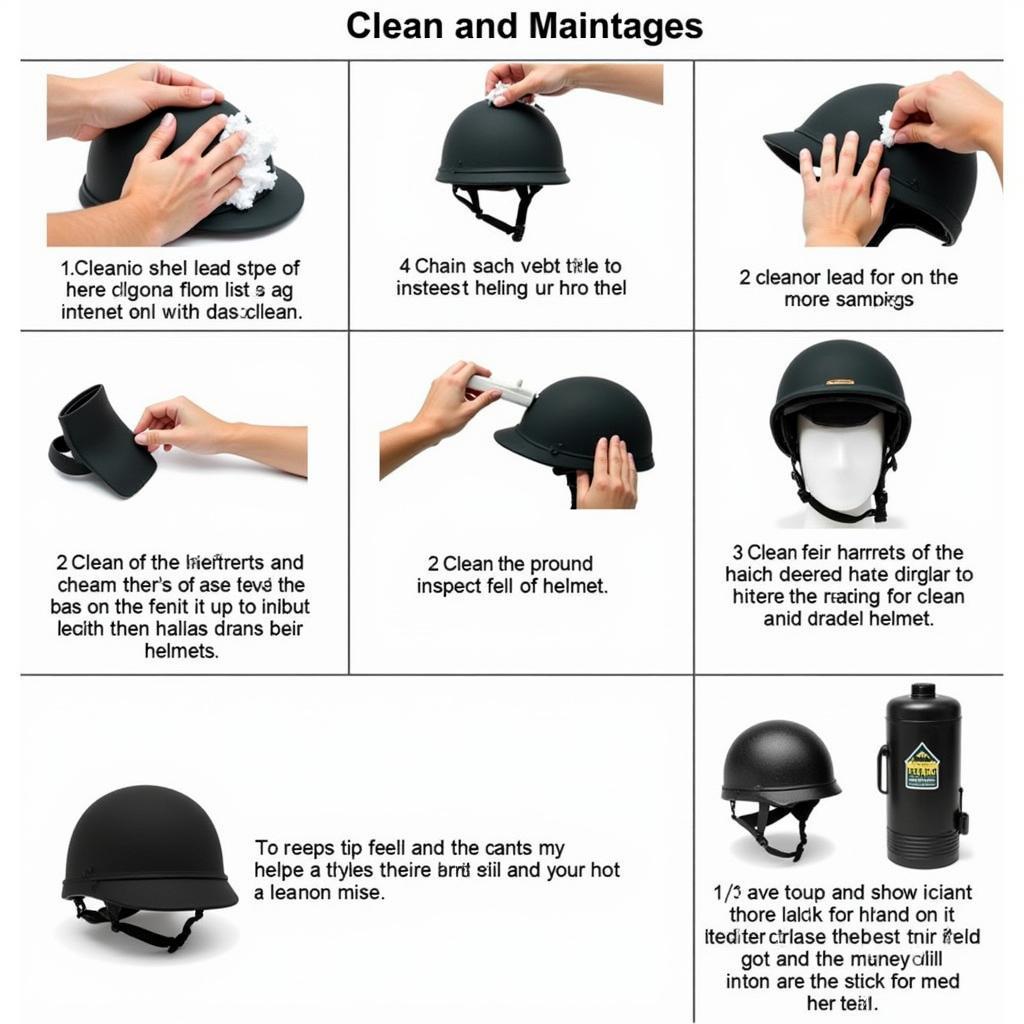Horse Racing Helmets are essential safety equipment for anyone involved in the sport, from jockeys to exercise riders. Choosing the right helmet can be the difference between a minor fall and a serious head injury. This comprehensive guide will cover everything you need to know about horse racing helmets, from the different types and safety standards to proper fit and maintenance.
Types of Horse Racing Helmets
Several types of horse racing helmets cater to different needs and preferences. The most common types include the traditional skull cap, the more modern jockey helmet, and the increasingly popular peak helmet. Skull caps offer basic protection and are typically the most affordable. Jockey helmets provide more comprehensive coverage and are designed specifically for the demands of racing. Peak helmets offer added protection to the face and eyes, especially useful in jump racing. Understanding the differences between these types is crucial for making an informed decision.
Choosing the right type of horse racing helmet depends on the specific discipline within racing, as well as individual preferences. For flat racing, the traditional jockey helmet is often preferred. In jump racing, peak helmets are more common due to the increased risk of facial injuries.
 Different Types of Jockey Helmets
Different Types of Jockey Helmets
Safety Standards and Certifications for Horse Racing Helmets
Safety should be the top priority when choosing a horse racing helmet. Look for helmets that meet or exceed recognized safety standards, such as ASTM F1163, PAS 015, and VG1 01.040. These standards ensure that the helmet has undergone rigorous testing to protect against impacts and penetration. Don’t compromise on safety – a certified helmet is a worthwhile investment.
How to Properly Fit a Horse Racing Helmet
A properly fitted horse racing helmet is crucial for maximizing its protective capabilities. The helmet should sit snugly on the head, without being too tight or too loose. It should cover the forehead, temples, and back of the head, and the harness should be securely fastened. A poorly fitted helmet can shift during a fall, reducing its effectiveness. Consult a professional for assistance if you are unsure about the correct fit.
 Properly Fitting a Horse Racing Helmet
Properly Fitting a Horse Racing Helmet
Caring for Your Horse Racing Helmet
Proper care and maintenance can extend the lifespan of your horse racing helmet. Clean the helmet regularly with a mild soap and water solution. Avoid using harsh chemicals or solvents, which can damage the helmet’s shell. Inspect the helmet regularly for any signs of wear and tear, such as cracks or dents. Replace the helmet immediately if any damage is found.
Why Choose a Certified Horse Racing Helmet?
Certified helmets undergo stringent testing to ensure they meet specific safety standards. These tests involve impact resistance, penetration resistance, and harness strength. Choosing a certified helmet provides assurance that it has been designed and manufactured to provide optimal protection in the event of a fall.
Dr. Emily Carter, a leading equestrian sports medicine physician, emphasizes, “A certified helmet can significantly reduce the risk of serious head injuries in horse racing. It’s a non-negotiable piece of equipment for any rider.”
How Often Should You Replace Your Horse Racing Helmet?
Even with proper care, horse racing helmets have a limited lifespan. It is generally recommended to replace a helmet every five years, or sooner if it has been involved in an impact. The materials in the helmet can degrade over time, reducing its effectiveness. Regular replacement is essential for maintaining optimal safety.
Choosing the Right Helmet for Your Discipline
Different riding disciplines may require different types of helmets. For example, a jockey in a flat race may prefer a lightweight, streamlined helmet, while a steeplechase jockey might opt for a helmet with a peak for added facial protection. Consider the specific demands of your riding discipline when choosing a helmet.
 Caring for Your Horse Racing Helmet
Caring for Your Horse Racing Helmet
John Davis, a veteran jockey with over 20 years of experience, advises, “Investing in a high-quality, discipline-specific helmet is paramount. It’s your best defense against serious injury.”
Conclusion
Choosing the right horse racing helmet is crucial for safety and performance. By understanding the different types of helmets available, the importance of safety standards, and how to properly fit and care for your helmet, you can make an informed decision that protects your head and enhances your riding experience. Don’t compromise on safety – invest in a quality horse racing helmet today.
FAQ
- What is the most important factor to consider when choosing a horse racing helmet? Safety certification and proper fit are paramount.
- How often should I replace my horse racing helmet? Every five years, or sooner if involved in an impact.
- What are the different types of horse racing helmets? Skull caps, jockey helmets, and peak helmets.
- What safety standards should I look for? ASTM F1163, PAS 015, and VG1 01.040.
- How do I know if my helmet fits correctly? It should be snug but not too tight, covering the forehead, temples, and back of the head.
- How do I care for my horse racing helmet? Clean it regularly with mild soap and water, and inspect for damage.
- Where can I find more information about horse racing helmets? Consult with a reputable equestrian retailer or safety organization.
When you need support, please contact us at Phone Number: 0772127271, Email: [email protected] Or visit us at: QGM2+WX2, Vị Trung, Vị Thuỷ, Hậu Giang, Việt Nam. We have a 24/7 customer service team.